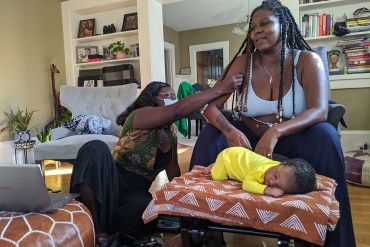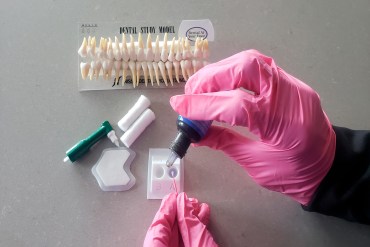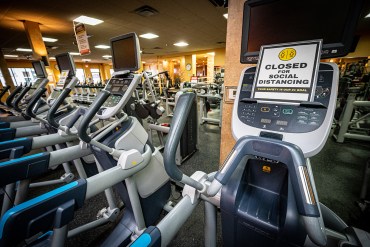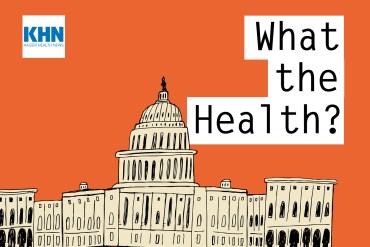Wildfires’ Toxic Air Leaves Damage Long After the Smoke Clears
As fires burn longer and closer to cities throughout the West, researchers are trying to understand the lasting health impacts by studying a Montana town previously smothered by wildfire smoke.
KHN and California Healthline staff made the rounds on national and local media this week to discuss their stories. Here’s a collection of their appearances.
In Face of COVID Threat, More Dialysis Patients Bring Treatment Home
Since the COVID-19 pandemic hit, more patients are administering dialysis to themselves at home rather than receiving it in a clinic. Although home dialysis limits exposure to the virus, it comes with its own challenges.
Black Women Turn to Midwives to Avoid COVID and ‘Feel Cared For’
Midwifery was a tradition among slaves from Africa, but in more recent decades, pregnant Black women have generally shunned the approach. Now, home births and midwives are making a comeback in the Black community.
Es difícil decir si es COVID, síntomas por inhalar humo… o la gripe que ya llega
Por los incendios en California, pacientes llegan a los centros de salud con síntomas similares a los de COVID. Y hay que seguir los protocolos.
Lack of Antigen Test Reporting Leaves Country ‘Blind to the Pandemic’
A KHN review found more than 20 states either don’t count or have incomplete data on the use of COVID-19 antigen tests, leaving the public in the dark about the true scope of the pandemic.
Tough to Tell COVID From Smoke Inhalation Symptoms — And Flu Season’s Coming
Respiratory symptoms stemming from coronavirus infection and smoke inhalation are too similar to distinguish without a full workup. This is complicating the jobs of health care workers as wildfires rage up and down the West Coast.
COVID Vaccine Trials Move at Warp Speed, But Recruiting Black Volunteers Takes Time
The National Institutes of Health has suggested minorities should be overrepresented in COVID-19 vaccine trials — perhaps at rates that are double their percentage of the U.S. population. But efforts to recruit patients from racial minority groups are just beginning, while some trials have already advanced to phase 3.
Los NIH, “muy preocupados” por efectos secundarios en ensayo de vacuna para COVID
La Administración de Alimentos y Medicamentos está evaluando la posibilidad de seguir a los reguladores británicos y reanudar el ensayo de la vacuna. Pero hay dudas.
COVID Exodus Fills Vacation Towns With New Medical Pressures
As people leave COVID-stricken cities to settle semi-permanently in vacation communities, locals assess how these new residents are changing demands on medical services.
New Dental Treatment Helps Fill Cavities and Insurance Gaps for Seniors
A new treatment for tooth decay is cheaper, quicker and less painful than getting a filling. Originally touted as a solution for kids, silver diamine fluoride is poised to become a game changer for treating cavities in older adults or those with disabilities that make oral care difficult.
NIH ‘Very Concerned’ About Serious Side Effect in Coronavirus Vaccine Trial
The AstraZeneca trial is on hold in the U.S. as scientists try to unravel whether a rare neurological condition is linked to the vaccine. But regulators are frustrated by a lack of information from the drugmaker.
‘It Seems Systematic’: Doctors Cite 115 Cases of Head Injuries From Crowd Control Devices
In the most comprehensive tally of such injuries to date, the Physicians for Human Rights scoured publicly available data — including social media, news accounts and lawsuits — to document and name victims of summer protests. Still, the group cautions, it’s likely an undercount.
‘Terrible Role-Modeling’: California Lawmakers Flout Pandemic Etiquette
As California workers and schoolchildren struggled to work from home, state lawmakers met in person. And as their legislative session came to a close in late August, they broke COVID rules: They huddled, let their masks slip below their noses, removed their masks to drink coffee — and required a new mom to vote in person while toting her hungry newborn.
Readers and Tweeters Grapple With COVID Therapies and Forecasts
Kaiser Health News gives readers a chance to comment on a recent batch of stories.
Making Gyms Safer: Why the Virus Is Less Likely to Spread There Than in a Bar
Gyms are reopening with fewer people and more protocols, and they want to rehabilitate their pandemic-battered image. Although there’s not much evidence, they say science is on their side.
Kids Are Missing Critical Windows for Lead Testing Due to Pandemic
Inspections for lead hazards and blood testing for lead have dropped significantly just as kids are spending more time in the places where their exposure to the poisonous metal is highest: their homes.
KHN’s ‘What the Health?’: The Politics of Science
Republicans have all but abandoned the Affordable Care Act as a campaign cudgel, judging from their national convention, at least. Meanwhile, career scientists at the federal government’s preeminent health agencies — the Food and Drug Administration, the Centers for Disease Control and Prevention and the National Institutes of Health — are all coming under increasing political pressure as the pandemic drags on. Joanne Kenen of Politico, Mary Ellen McIntire of CQ Roll Call and Sarah Karlin-Smith of the Pink Sheet join KHN’s Julie Rovner to discuss this and more. Plus, Rovner interviews KHN’s Elizabeth Lawrence about the latest KHN-NPR “Bill of the Month” installment.
¿Cuál es el riesgo de contagiarse el coronavirus en un avión?
Expertos explican los riesgos, pero enfatizan que aunque volar es una actividad de riesgo relativamente bajo, se debe evitar viajar a menos que sea absolutamente necesario.
Hospitals, Nursing Homes Fail to Separate COVID Patients, Putting Others at Risk
COVID patients have been commingled with uninfected patients in California, Florida, New Jersey, Iowa, Ohio, Maryland, New York and beyond. While officials have penalized nursing homes for such failures, hospitals have seen less scrutiny.

























